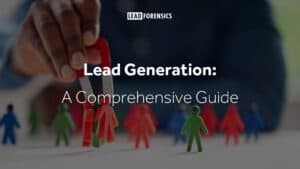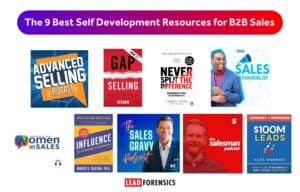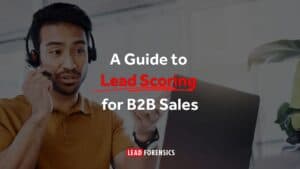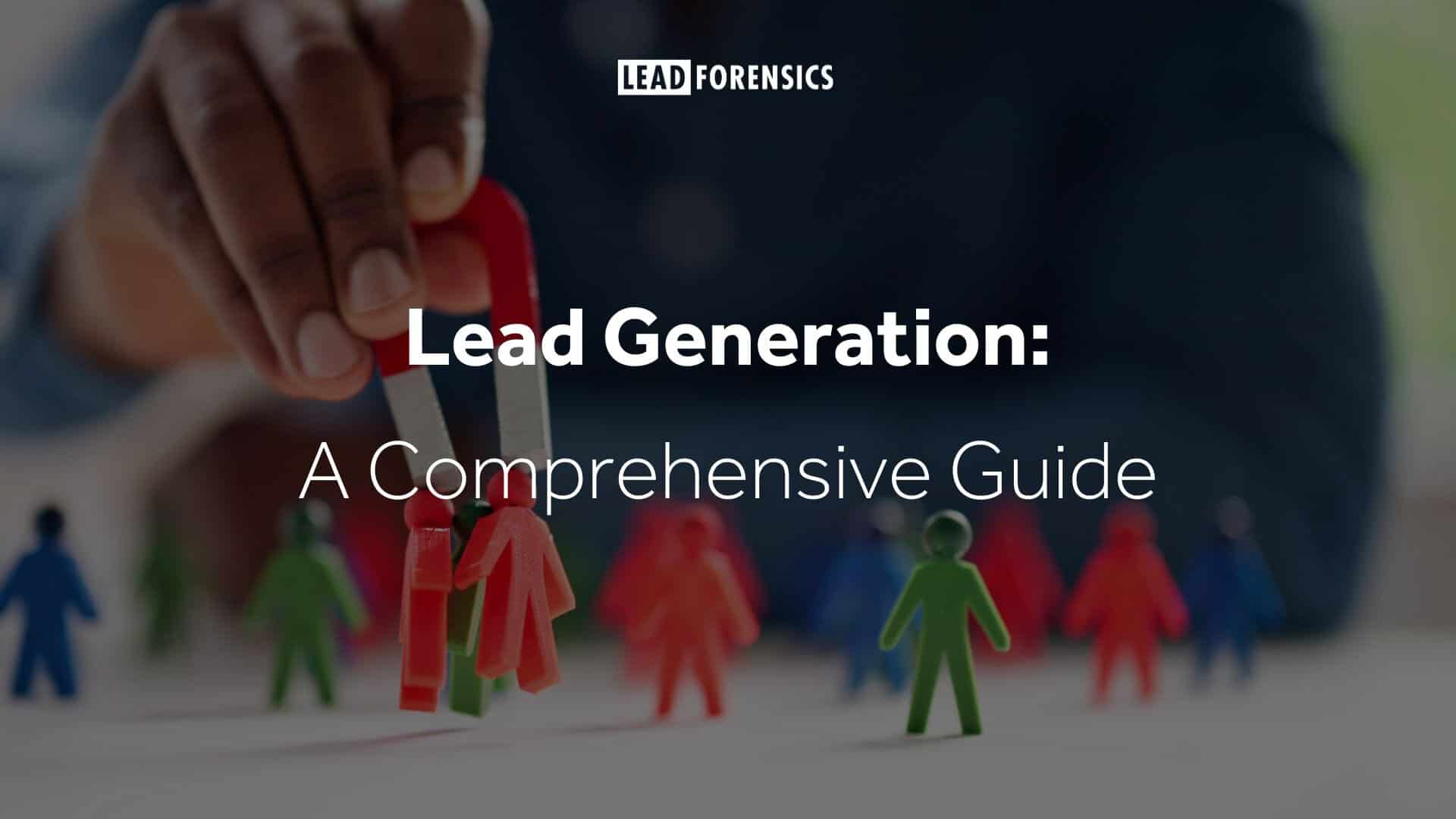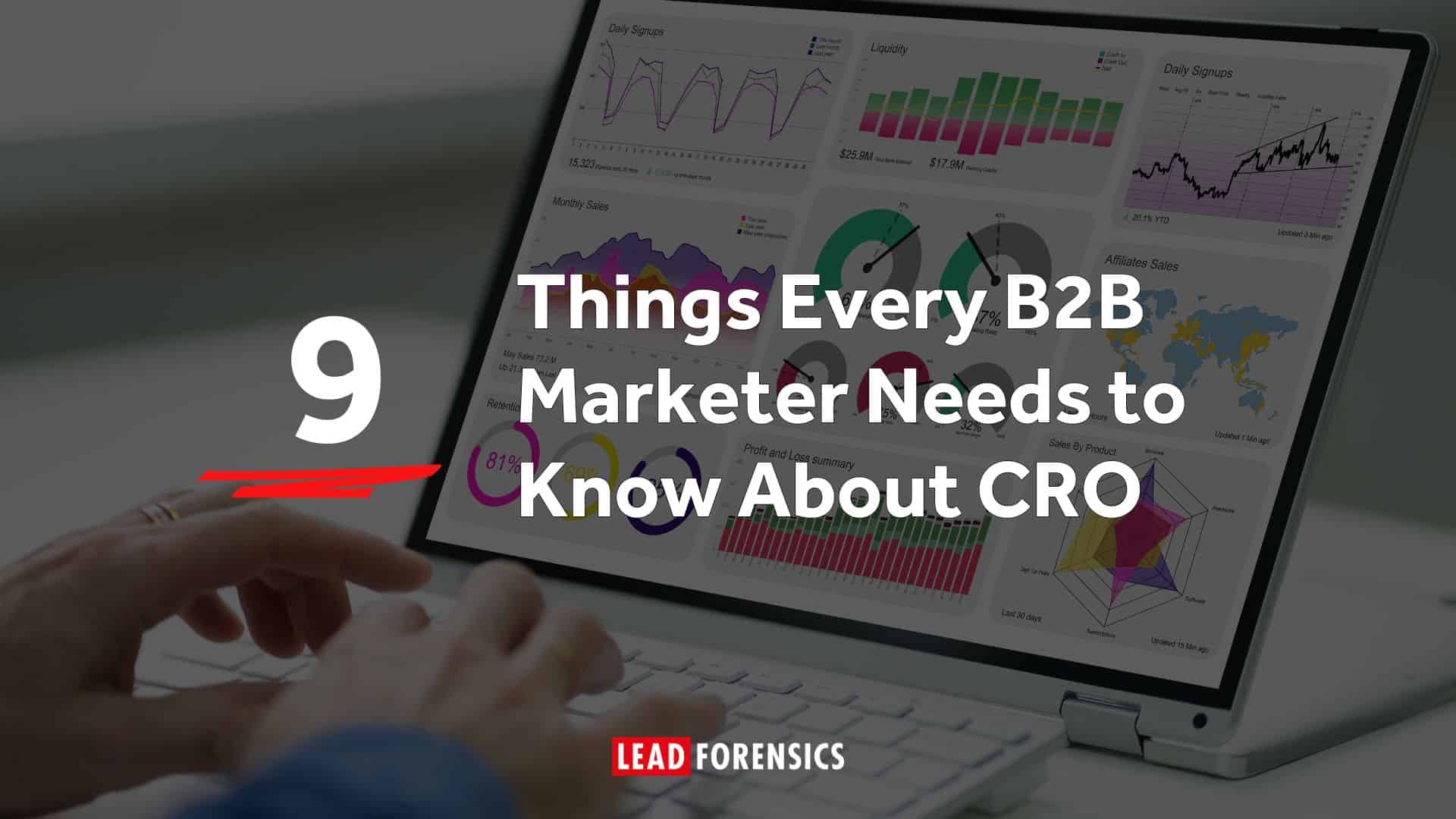Great, you need more new business opportunities and a fresh lead has just arrived in your inbox. Like any relationship, first impressions count – so before you dive straight in and send your ready-made value proposition, consider a B2B sales pipeline health check and the steps you can take to ensure it’s in the best condition for your new opportunity.
Step #1: Get to know your prospect
Getting to know your prospect has never been more important. A study by Forrester Research discovered a massive 80% of executive buyers feel the sales agenda focuses not on their needs, but on the seller’s objectives instead. Plus, another study presented by Forbes found that 70% of B2B buyers rated how vendors engaged with them as more impactful than what they were actually selling.
Buyers are becoming increasingly expectant of sales to fully understand their business challenges and needs and engage on a level that’s meaningful to them before they hear a sales pitch.

Conducting A Needs Analysis
It might feel like buyers expect you to read their minds, but by understanding what their pains and business needs are, you can tailor your approach and position your product or service as the perfect solution. What are similar prospects or existing clients experiencing? How did you help them overcome their challenges?
But why stop at providing solutions to the problems you know they already have? Consider identifying new business challenges and discuss how you can work with them to tackle these too – they might have assumed your product benefits and not realized how else you can help.
Even if your prices aren’t the most competitive in the market by going the extra mile to understand wider business challenges, you will differentiate yourself from your competitors.
Research shows 56% of purchasing decision-makers report paying more for a product or service just because the customer experience was superior to lower cost options.
But Prospects Are Still People!
Keep in mind that in addition to having business goals they need to achieve, the prospect is likely to have personal goals too. According to McKinsey 70% of buying experiences are based on how the prospect feels they are being treated. What motivates them as an individual? Will they be receiving a bonus if their project is completed on time? Are they striving to improve their reputation and impress their boss?
By understanding what drives the prospect as an individual you will have the power to develop your relationship and position your product as a solution to their personal goals too – and when it comes to gaining a competitive advantage this will create loyalty and trust that will help you win every time.

Working As A Team
Take into account that the solution to their challenges doesn’t end with the product. Consider their business structure and how the price, implementation process, and projected ROI will affect their decision-making process.
One size might not always fit all – A CSO Insight sales performance study revealed that on average 4.1 people are involved in the decision-making process. But who has the time to create relationships with four people at one business, before they’ve even become a client? By developing a strong and trusting relationship with one prospect you can work collaboratively with them to build a business case that tackles all of the decision-maker (DMC)’s challenges. What can they tell you about their colleagues and how can you help them impress them in return?
Using Lead Forensics To Get To Know Your Prospect
The art of getting to know a prospect isn’t always so easy, and with only 10.5% of B2B decision-makers responding to sales emails, the hard truth is they might not always be so open to building a relationship with you.
With Lead Forensics website intelligence software you’ll discover when your prospect visits your website and exactly what they looked at whilst there. Perhaps they look at products you weren’t aware they were in the market to buy, or read a client testimonial relative to their business.
These clues will help you get to know your prospect and make the smart decisions that help push them to the next stage of the B2B sales pipeline. And when nurtured leads make 47% larger purchases than non-nurtured leads7, the potential ROI could be huge.
TIP: Consider the Lead Forensics real-time Trigger Report feature to identify additional opportunities. It allows you to set various visitor characteristics and triggers that send an instant alert when a prospect matching your given profile visits the website, along with their contact details. For example, if they visit a certain page, are from a particular country, or came to your site from a particular offer or landing page.
Step #2: Prioritize Opportunities
When building relationships becomes so important to your B2B sales pipeline, your time spent nurturing prospects is likely to increase. On average, companies that nurture leads experience a 45% increase in lead generation ROI, however, 79% of marketing leads never convert to a sale.
Investing time in the wrong prospect opportunities can be damaging and will result in a leaky funnel. Deciding what opportunities need that extra attention is key to your success.
Profiling Your Perfect Lead
By painting a picture of your perfect sales lead, you can instantly assess how strong a new opportunity is. Consider building a lead scoring system to help you make fast decisions about lead strength. Is the prospect a key decision-making contact? What is the potential sales value? Do you have clients that had similar business challenges that you were able to solve?
As it currently stands, 79% of B2B marketers have not established lead scoring, but a survey from CMS wire found that 31% of respondents named increased sales productivity and effectiveness as the main benefit of implementing a lead scoring system.
Assessing your prospects’ activity on your website will tell you how interested the prospect is and can help in your lead-scoring efforts. With Lead Forensics you can discover exactly how many times a prospect has visited your website, what they looked at, and how long they browsed. This gives you real-time intelligence on their engagement with your business. Plus, it instantly tells you the size and sector of the business, so you have all the information you need to build a concrete lead-scoring profile.
Timing Is Everything
Once you’ve developed a relationship with your prospect and decided you want to spend time working them through the funnel, it’s important that you maintain a trusting relationship that is aligned with the sales cycle.
Understanding how your prospect thinks and when they’re ready to buy is vital to ensuring they aren’t influenced by competitor offers or negative feedback. This is especially true once your prospect becomes a lead. And, with the average attention span at just 8 seconds, the ‘when’ and ‘how’ of your engagement is vital.
A study from Inside Sales suggests that your odds of qualifying a lead are a whopping 21 times better if you follow up within 5 minutes of it being created vs. 30 minutes of it being created.
Consider using the Watch List feature from Lead Forensics to be alerted in real time when a prospect of interest visits your website, so you can follow it up with a timely call relating to what pages or products they’ve viewed.

TIP: Lead Forensics can also show you when a second (or third, or fourth…) person from the same company visited too. You’ll be able to pinpoint exactly when the company is really interested and can make a well-timed call to a sales-ready decision-maker.
Step #3: Proactive B2B Sales Pipeline Management
The ability to be reactive to prospect engagement can be hugely effective in developing a fast-moving relationship. However, it’s key to remember that you cannot rely solely on your prospect’s actions to close a sale – your behavior must drive their actions too.
Learning From Your Successes
Even when your results are on the up, it’s important to continually monitor your B2B sales pipeline velocity and measure how your actions affect the prospects’ decision-making process – and that means metrics
Make a note of the average time your prospects spend on each buying phase. Do you notice anything that changes, increases or decreases each time? What is the probability of a win at each phase and what actions have improved this before? Are you assessing your won and lost sales by industry, company size, and lead source?
By transforming these insights into hard metrics, you’ll have the power to manage your B2B sales pipeline according to actions, rather than hoping for a win. In turn, you’ll be able to evolve your pipeline, shorten sales cycles and increase win rates. Lead Forensics provides the data you need to identify these trends, including your prospects’ business information, size, activity, and lead source.
Don’t forget to share your metrics too – discussing your learnings with colleagues will reinforce your findings or force you to re-evaluate.
Turning The “No Decision” Into Intelligence
Whether it’s “no budget”, “no current need” or a lack of authority, by now you’ll have identified your common objections and have a plan on how you can win them back. But what about the dreaded “no decision”?
According to a CSO Insights research report, sales don’t close 53% of their forecasted deals, a staggering 26% of which were attributed to “no decision”, and in addition, 50% of marketing qualified leads (MQLs) are not ready to buy. But “not right now” doesn’t always mean “no”.
It’s easy for prospects to decide not to decide, but whilst winning the deal is sales priority number one, getting to a conclusive “no” fast is crucial to your B2B sales pipeline management.

Remember that feedback is gold dust, and it’s crucial to ask yourself “why did a no decision happen?” to avoid investing your time on non-movers in the future.
TIP: Consider using Lead Forensics to maintain your relationship and be reactive when the prospect re-engages – you might be surprised when a “no decision” prospect comes back to life. The Watch List feature will alert you in real-time when your prospect visits your website, allowing you to make timely contact and ensure they don’t engage with a competitor first.
It Doesn’t Always End With A Sale
We’ve all heard and know that it’s more profitable to retain a customer than to acquire a new one. In fact, it can cost between 4 and 10 times more to acquire a new customer. Maintaining the relationship you nurtured through the sales funnel shouldn’t end once your prospect has committed to a sale. And if you want to lock in their renewal, add an upsell or get them to refer business to you, it’s essential to ensure they continue to feel valued by you.
Remember that the ‘personal touch’ counts, especially when 68% of clients leave because of the treatment they receive. Consider the points through the customer journey you should touch base, keeping in mind their communication preferences. Could you schedule performance reviews? Could you create a reminder of their noteworthy business dates like anniversaries or events they are holding, and send content that would be relevant to them?
An increase of 2% in customer retention is a saving of 10% in costs. So whether you’re renewing, upselling or taking a long-term sales approach, if your client feels valued, your B2B sales pipeline forecast will look much healthier. And timely points of contact could give you an even better chance of selling that extra product.
TIP: Use Lead Forensics to discover when current clients are looking at product pages on your website and take that as your cue to re-engage.
Take a pipeline health check with a free Lead Forensics trial, and you’ll discover just how many new business and upsell opportunities you‘re missing out on.
About Lead Forensics
Lead Forensics is the UK’s No. 1 website intelligence software that tells you exactly who your website visitors are and more. Discover which anonymous businesses have visited your website and access their full contact details so you can generate more leads, maximize your online ROI and reach sales leads before your competitors.
It also provides you with such detailed information, you’ll spend less time researching your visitors, more time speaking to them, and converting them to sales. The level of detail you’ll receive from us means fewer cold calls to achieve your targets.
Identify your upgrade and cross-sell opportunities with existing clients by identifying their specific actions and page views on your website. Tailor your communication with them around these actions for a more successful outcome – an invaluable benefit to any B2B sales pipeline.
Additionally, your dedicated Customer Success Manager will ensure you get started quickly, easily, and begin to see results immediately!
Thank you
Thanks for reading this blog about the building a healthy B2B sales pipeline. Every week we publish new best practice guides and tips and tricks for B2B sales, so please subscribe for alerts, add us to your bookmarks or come back again for more!
As you read this article, you may also be interested in “23 B2B Sales Tools to revolutionize your sales strategies and results“
If you’re interested in getting more valuable leads, you can get a demonstration of Lead Forensics here.






